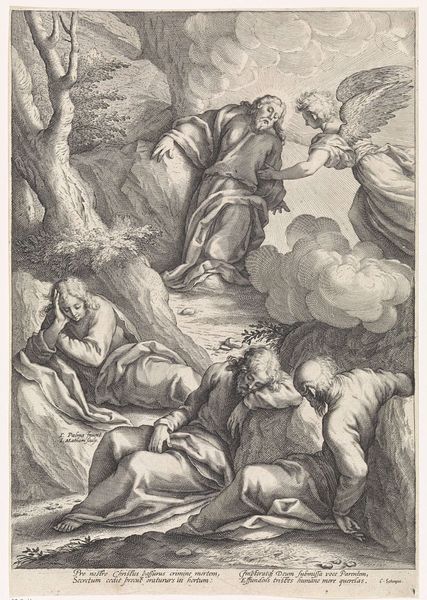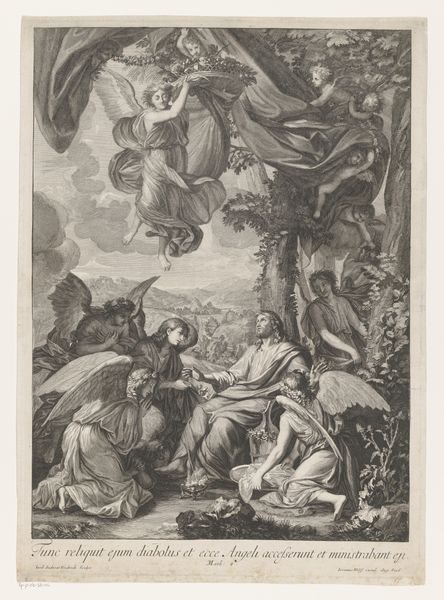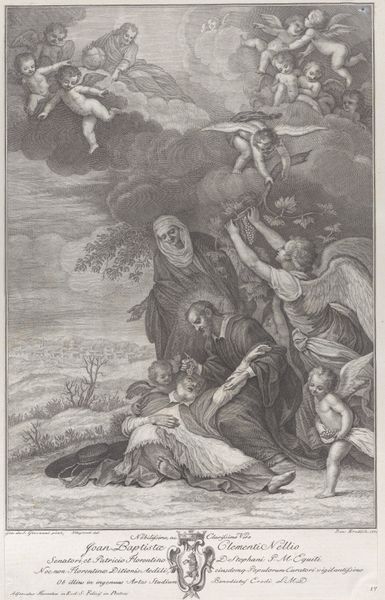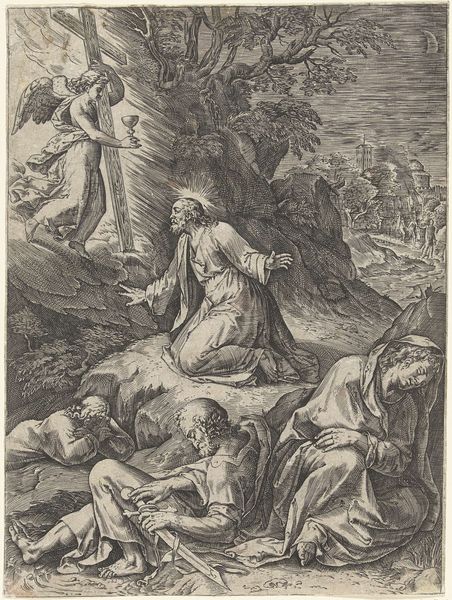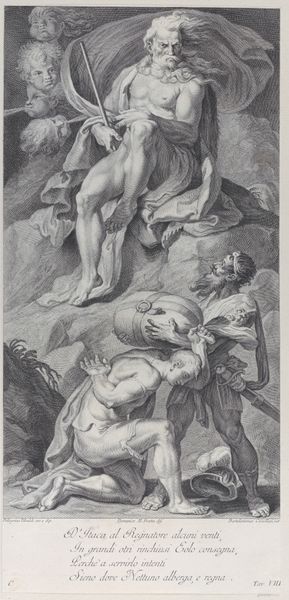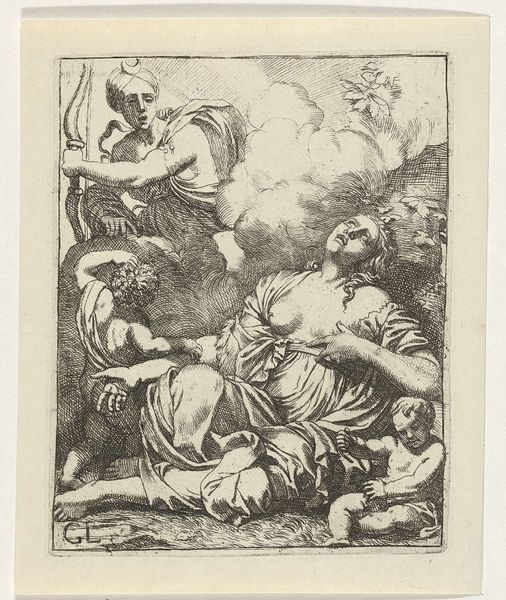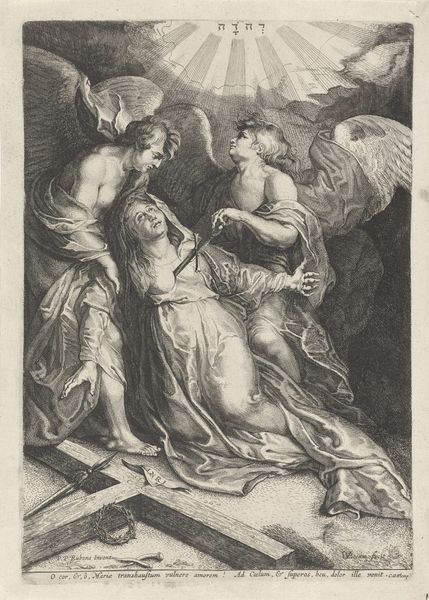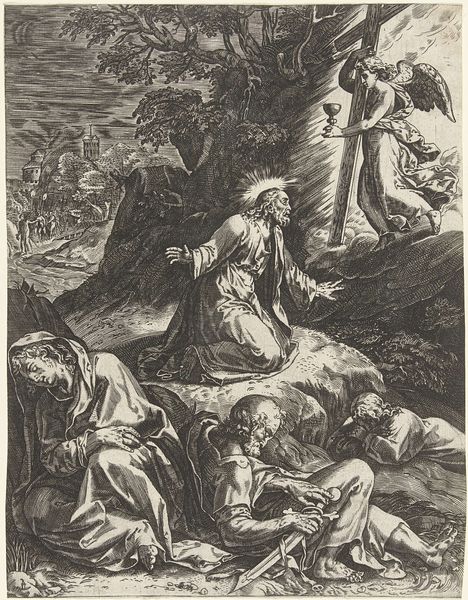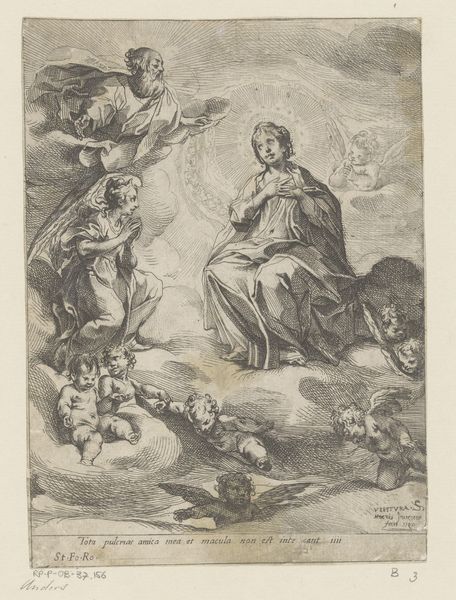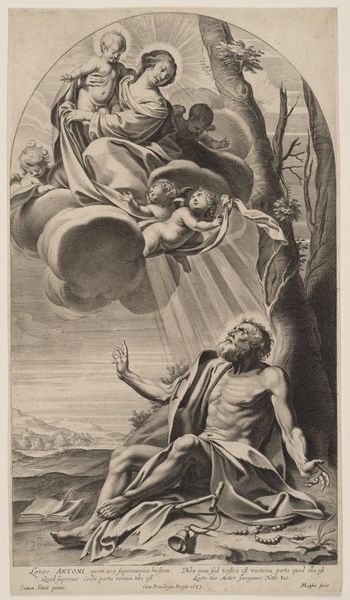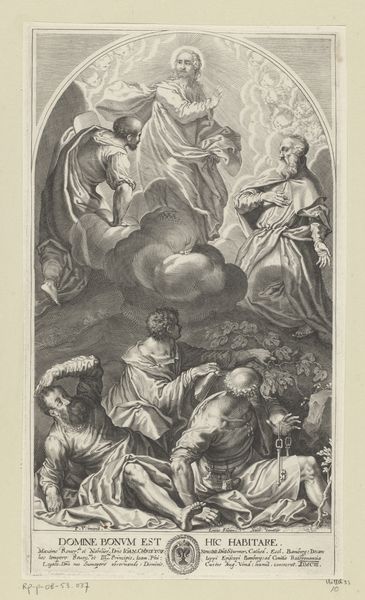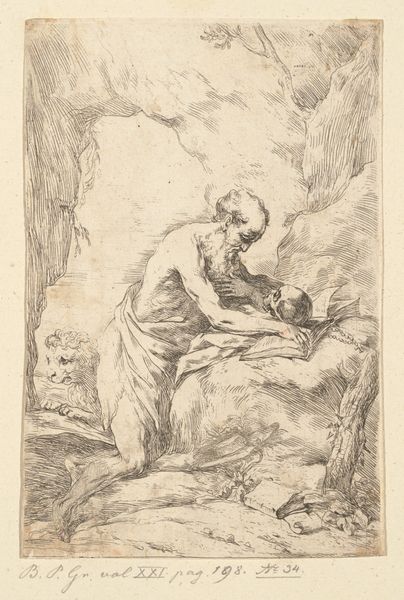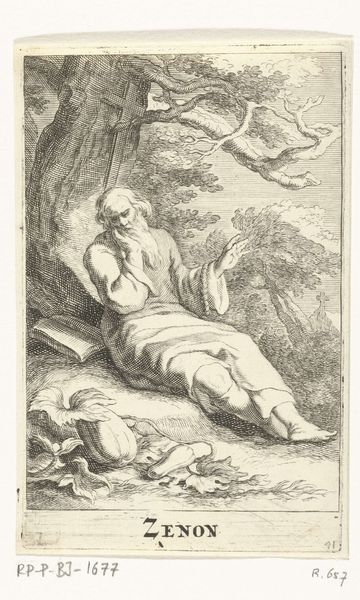
drawing, print, engraving
#
drawing
#
baroque
# print
#
landscape
#
figuration
#
history-painting
#
engraving
Dimensions: sheet: 17 1/2 x 15 7/8 in. (44.5 x 40.4 cm) plate: 8 1/16 x 6 3/16 in. (20.4 x 15.7 cm)
Copyright: Public Domain
Curator: Oh, the air of it just whispers despair, doesn't it? I'm practically tasting ash just looking at it. Editor: We're standing before "Agony in the Garden," an engraving by Benoit Thiboust, dating from somewhere between 1680 and 1719. You can currently find it residing at the Metropolitan Museum of Art. Curator: "Agony" feels right. Look at the pose! It's a collapse. Is that a rock he's on? Even that seems to be rejecting him, cold and hard beneath his surrender. And that goblet, offered by an angel no less; looks more like a threat than comfort, hanging there in the air like some awful promise. Editor: Indeed. Consider how the artist utilizes chiaroscuro—the stark contrast of light and shadow—to amplify the drama. The scene is literally plunged into darkness, save for those key figures, drawing our eyes to the emotional crux of the composition: the suffering of Christ in Gethsemane, facing his impending crucifixion. The diagonal thrust implied by Christ's body is cleverly countered by the angelic visitation, a dialogue written into their very poses. Curator: The angels themselves seem conflicted; not like cherubic beacons of hope, but wary, troubled witnesses to the drama unfolding. Baroque loved that feeling of things not being so simple and clearly right or wrong, a world of light and shadow indeed. Editor: Note, too, the deliberate contrast between the grounded weight of Christ’s form and the ethereal, cloud-borne angels. The figures function almost as a series of rising visual planes, ascending from earthly suffering towards the divine, embodying perhaps, the hope that resides even within the most profound despair. The landscape around the figures offers subtle clues about a world that might exist, though that landscape seems fraught as well. Curator: It's unsettling, deeply so. Yet, even with the feeling of unease, there’s a power here too, a rawness that catches you. Not exactly inviting, perhaps, but unforgettable, like all true suffering probably is. Editor: Precisely. The success of "Agony in the Garden" surely lies in Thiboust's ability to encapsulate such raw emotional conflict with such compelling and technically brilliant design.
Comments
No comments
Be the first to comment and join the conversation on the ultimate creative platform.
